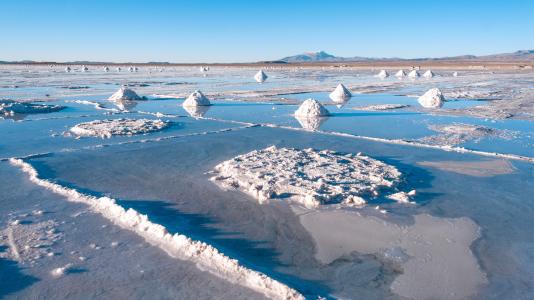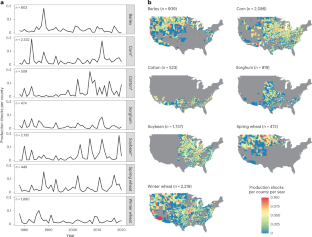2023-06-14 アルゴンヌ国立研究所(ANL)

Geothermal brines like the Uyuni Salt Flats in Bolivia provide a valuable source of lithium and other essential materials. (Image by Shutterstock/Ksenia Ragozina.)
◆水からの重要な材料の抽出には、膜などの伝統的な技術から、界面太陽蒸気発生装置のような革新的な技術まで、さまざまな手法が検討されています。この研究は、より安全かつ循環型の材料経済を実現するために、アルゴンヌ研究所が水の流れからより多くの価値を引き出すことに注力していることを示しています。
<関連情報>
- https://www.anl.gov/article/to-boost-supply-chains-scientists-are-looking-at-ways-to-recover-valuable-materials-from-water
- https://onlinelibrary.wiley.com/doi/abs/10.1002/adma.202300913
水から重要な資源を回収するための材料設計戦略 Material Design Strategies for Recovery of Critical Resources from Water
Omar A. Kazi, Wen Chen, Jamila G. Eatman, Feng Gao, Yining Liu, Yuqin Wang, Zijing Xia, Seth B. Darling
Advanced Materials Published: 31 March 2023
DOI:https://doi.org/10.1002/adma.202300913
Abstract
Population growth, urbanization, and decarbonization efforts are collectively straining the supply of limited resources that are necessary to produce batteries, electronics, chemicals, fertilizers, and other important products. Securing the supply chains of these critical resources via the development of separation technologies for their recovery represents a major global challenge to ensure stability and security. Surface water, groundwater, and wastewater are emerging as potential new sources to bolster these supply chains. Recently, a variety of material-based technologies have been developed and employed for separations and resource recovery in water. Judicious selection and design of these materials to tune their properties for targeting specific solutes is central to realizing the potential of water as a source for critical resources. Here, we review the materials that have been developed for membranes, sorbents, catalysts, electrodes, and interfacial solar steam generators (ISSGs) that demonstrate promise for applications in critical resource recovery. In addition, we offer a critical perspective on the grand challenges and key research directions that need to be addressed to improve their practical viability.
This article is protected by copyright. All rights reserved


